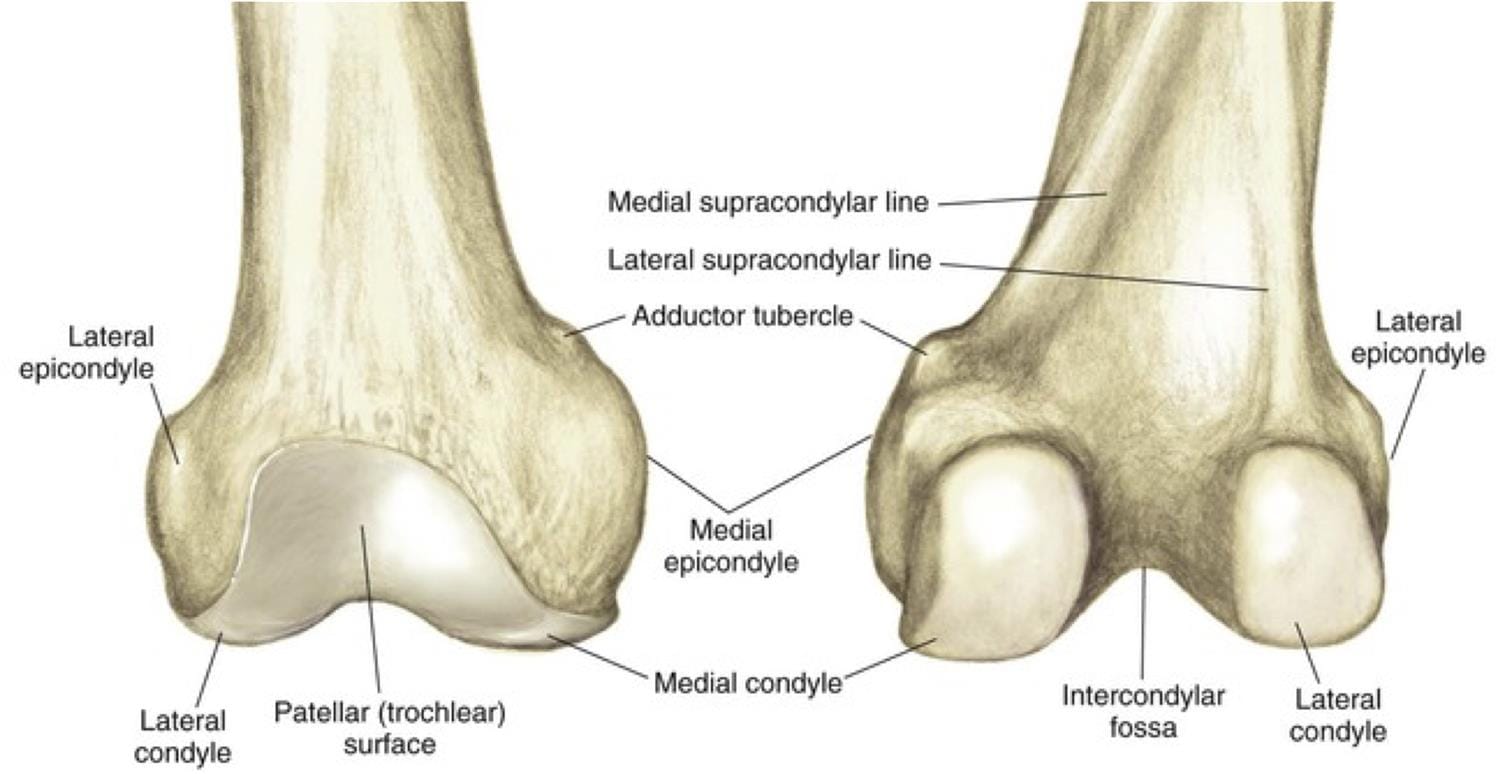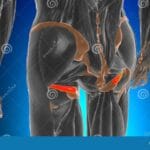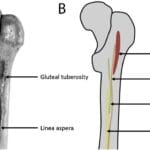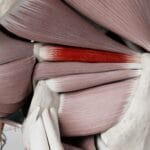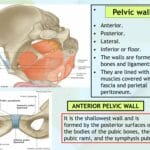The intertrochanteric crest, a prominent landmark on the proximal femur, plays a crucial role in hip function and stability. This article provides a comprehensive overview of its anatomy, attachments, clinical relevance, and ongoing research.
Understanding the Intertrochanteric Crest
The intertrochanteric crest is a smooth, bony ridge located on the posterior surface of the proximal femur. It extends obliquely, inferomedially between the greater trochanter (superiorly) and the lesser trochanter (inferiorly). This ridge, along with the anterior intertrochanteric line, marks the transition between the femoral neck and shaft. A key feature of the intertrochanteric crest is the quadrate tubercle, an elevation found between the middle and proximal third of the crest. Interested in learning more about the process of involution of uterus? Click the link to discover everything you need to know about this fascinating topic.
Detailed Anatomy and Attachments
The intertrochanteric crest originates at the greater trochanter, a large, palpable prominence on the lateral aspect of the proximal femur. It then courses inferomedially, terminating at the lesser trochanter, a smaller, conical prominence located medially and posteriorly on the proximal femur. The quadrate tubercle, situated on the intertrochanteric crest, serves as the primary attachment point for the quadratus femoris muscle.
Functional Significance and Biomechanics
The intertrochanteric crest serves several important functions:
Quadratus Femoris Attachment: This muscle, originating from the ischial tuberosity of the pelvis and inserting onto the intertrochanteric crest, is a key player in external rotation of the hip. It also contributes to hip adduction and abduction. The crest provides a stable anchor point for this muscle, enabling controlled hip movement.
Hip Stability: While not a direct attachment point for the hip joint capsule (which attaches distally along the anterior intertrochanteric line), the intertrochanteric crest likely contributes to the overall stability of the hip joint. Its robust structure and strategic location may help distribute forces and maintain joint integrity during movement. Some biomechanical studies suggest that variations in the crest’s morphology may influence stress distribution patterns and potentially contribute to fracture risk.
Hip Biomechanics: The crest’s influence on hip biomechanics is an area of ongoing research. Some studies suggest its shape and size may impact the efficiency of the quadratus femoris muscle and influence the overall range of motion of the hip.
Clinical Relevance and Surgical Implications
The intertrochanteric crest’s proximity to common fracture sites makes it a critical landmark in orthopedic surgery and trauma management:
Hip Fracture Classification: Intertrochanteric fractures, common in older adults, occur in the region between the greater and lesser trochanters. The intertrochanteric crest serves as a key reference point for classifying these fractures, which helps guide treatment decisions.
Surgical Approaches: Knowledge of the intertrochanteric crest’s precise location is essential for surgical planning and execution. It aids in accurate implant placement during hip replacement surgeries and guides the approach for fracture fixation. Understanding its relationship to surrounding neurovascular structures is crucial for minimizing complications.
Medical Imaging: The intertrochanteric crest is readily visible on radiographic imaging (X-rays, CT scans, MRI). This visibility allows for precise identification of fractures and assessment of the hip joint’s overall integrity.
Evolutionary and Comparative Anatomy
The intertrochanteric crest is also of interest to researchers studying human evolution. Comparative anatomical studies, examining the crest’s morphology across different primate species, can provide insights into the evolutionary pressures that shaped the development of bipedalism and the modern human hip. These studies may help explain the observed variations in crest size and shape among individuals and populations.
Ongoing Research and Future Directions
While much is known about the intertrochanteric crest, research continues to explore its multifaceted role in hip function, injury, and disease. Areas of ongoing study include:
- The relationship between crest morphology and fracture risk.
- The biomechanical influence of the crest on hip stability and movement.
- The potential role of the crest in the development of hip osteoarthritis.
- Advanced imaging techniques to better visualize and analyze the crest in vivo.
Conclusion
The intertrochanteric crest, though seemingly a simple bony ridge, is a vital anatomical structure with significant implications for hip health and function. Its role in muscle attachment, hip stability, fracture classification, and surgical planning underscores its importance in orthopedics and related fields. Ongoing research continues to deepen our understanding of this important landmark and its contribution to the complex biomechanics of the human hip.
- Unlocking 2-Letter Words with U: The Definitive Guide - April 4, 2025
- Unlock Words with the Letters THREE: Top Unscramble Tools 2025 - April 4, 2025
- Master Scrabble: X & Z Words for High Scores - April 4, 2025
